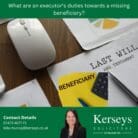Turnover rent arrangements
How to negotiate a turnover rent for retail premises
Negotiating turnover rent arrangements for retail premises
Turnover rents arrangements are increasingly common in retail lettings. In challenging times, they appeal to tenants because both the landlord and tenant share the risk of trade being adversely affected by the state of the wider economy. Landlords would prefer a guaranteed fixed rent but may have to agree to a turnover arrangement in order to secure a retail tenant. Both landlord and tenant should get expert legal advice because turnover rents are more complex than traditional rent terms.
‘A turnover rent may sound fairly straightforward when the deal is agreed,’ says Kimat Singh, Head of the Commercial Property Team with Kerseys Solicitors. ‘The key point for both landlord and tenant to understand is that making a turnover arrangement work requires continuous cooperation between landlord and tenant throughout the term of the lease. This is very different to a traditional quarterly rent and can come as a surprise.’
Structure
Before your solicitor can draft the turnover provisions, you must agree on how the rent will be structured. It is unusual for a rent to be entirely based on turnover, although it is possible. A more common arrangement is to have a fixed monthly or quarterly ‘base rent’ with a ‘top-up’ based on a percentage of the tenant’s turnover. The base rent is typically around 80 per cent of the open market rent, but you are free to agree something different. The turnover part of the rent will typically be in the range of 5% to10% of the tenant’s turnover.
Turnover rent arrangements often have an extra mechanism on top of the basic percentage. Landlords may want to be sure that the turnover element can never fall below an agreed level, even where the tenant is not trading well. Similarly, tenants may want to limit the amount of turnover they have to pay as rent if trade is good. These are referred to as a collar (at the lower end) and a cap (at the upper end). Your solicitor will include the formula for calculating these in the turnover provisions. It can be tricky to grasp how these operate in practice, so it is a good idea to include worked examples.
What counts as turnover?
The drafting must include a clear statement of what you have agreed will count as part of turnover. The starting point is the total revenue the tenant receives from trading at the property.
If a retail tenant also trades online, the landlord may argue that the physical shop contributes to those sales if customers browse in the shop and then buy online. Some retailers also operate a click and collect service. The landlord may want to reflect some of the turnover from online sales in the rent. This is always contentious and it is tricky to work out how to identify the right proportion of online sales. Many tenants just refuse to agree with this, but if you want to reflect online sales in your turnover provisions you must tell your solicitor.
The other key issue to agree on is what the tenant can deduct from gross turnover. For example, tenants will want to exclude items which are sold but then returned by the customer and refunded. Other items usually deducted include VAT, staff discounts, as well as postage and delivery charges paid by customers.
Record-keeping and data-sharing
A turnover arrangement means the tenant must keep and share records of all items to be included in and deducted from gross turnover and share them with the landlord on a regular basis. This adds an extra administrative burden for both parties and requires a level of trust and cooperation that they may not be used to.
The usual mechanism is for the parties to agree an expected turnover figure based on an estimate at the beginning of the lease. The tenant pays rent at that level ‘on account’, with regular reconciliations to show the actual turnover. These may be quarterly or monthly, depending on what you agree to and how much administration you are willing to take on. The landlord will often want a professional to certify the reconciliation statement, but this can add to the tenant’s costs. After each reconciliation, the payments made on account are adjusted to reflect the tenant’s actual turnover.
To encourage the tenant to provide accurate data when required by the lease, there is usually a mechanism to substitute a default notional rate of turnover if data is missing or proves to be inaccurate. This is usually the higher of the open market rent or the highest turnover in the previous year. It must be a plausible rent for the property, but it should be set at a level which makes it more attractive for the tenant to comply than to be in default.
Keeping open for trade
As there can be no turnover if the tenant is not open for trade, turnover leases usually have ‘keep open’ obligations.
The courts are usually reluctant to enforce these, so the lease should include a financial remedy for the landlord. You should agree on legitimate reasons for the tenant to close – for example for staff training; where the property has been damaged; or other circumstances beyond the tenant’s control. For any other days when the tenant does not trade, the lease should set out a notional turnover rent. Usually this is based on market rent or previous turnover which means the turnover rent can still be calculated and collected.
Ending the turnover rent arrangement
A successful turnover arrangement relies on a good relationship between landlord and tenant and requires the landlord to be confident that a specific tenant will trade well. For this reason, a turnover lease will usually provide for the turnover element to end if the tenant assigns to a new occupier and it will revert to market rent. The tenant will usually need to provide figures for a final reconciliation after the assignment and your solicitor can draft the required obligations.
How we can help
Turnover rent arrangements must be carefully planned and drafted. Our team of experienced property lawyers will make sure your turnover arrangements work in a way that suits you and helps you to meet your objectives.
For further information, please contact Kimat Singh, Head of the Commercial Property team at Kerseys Solicitors in Ipswich on 01473 213311 or Kerseys Solicitors in Colchester on 01206 584584 or email us at [email protected].







